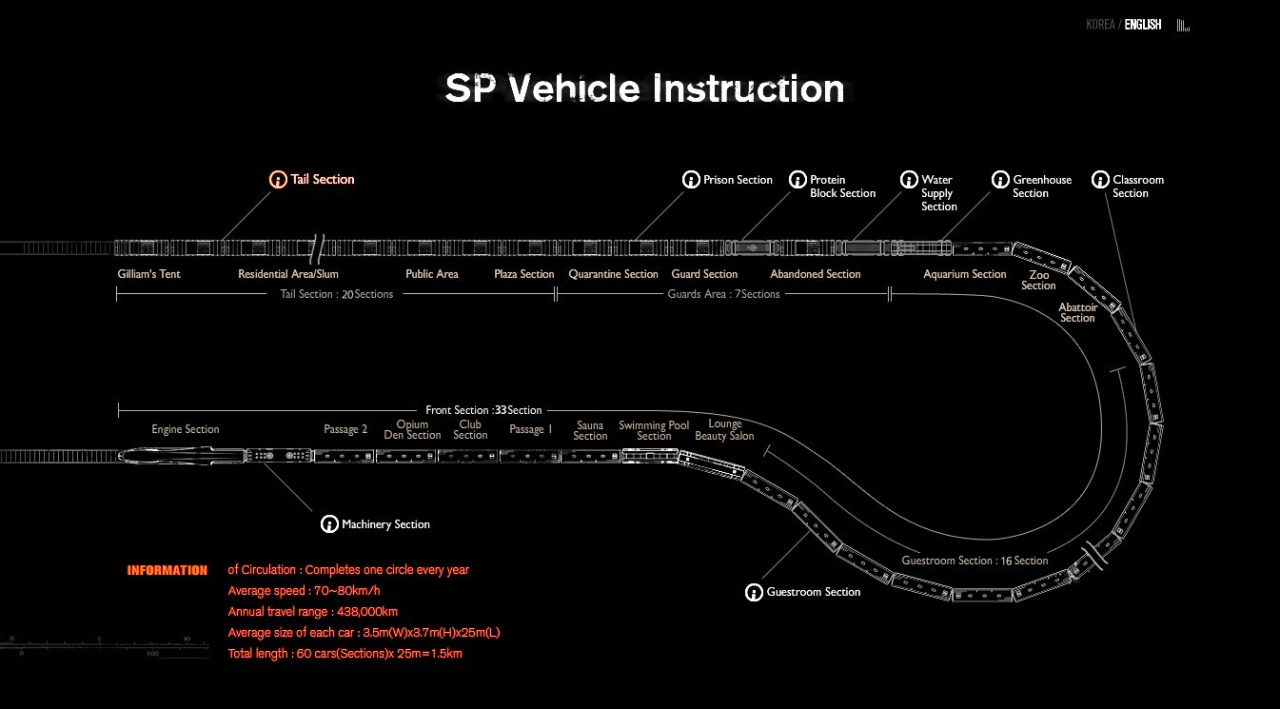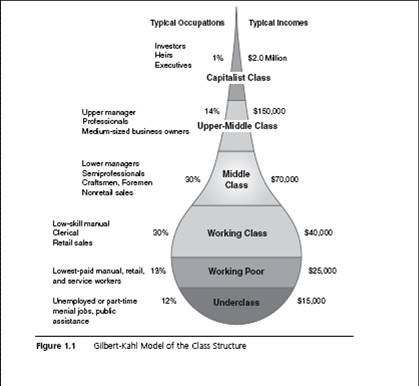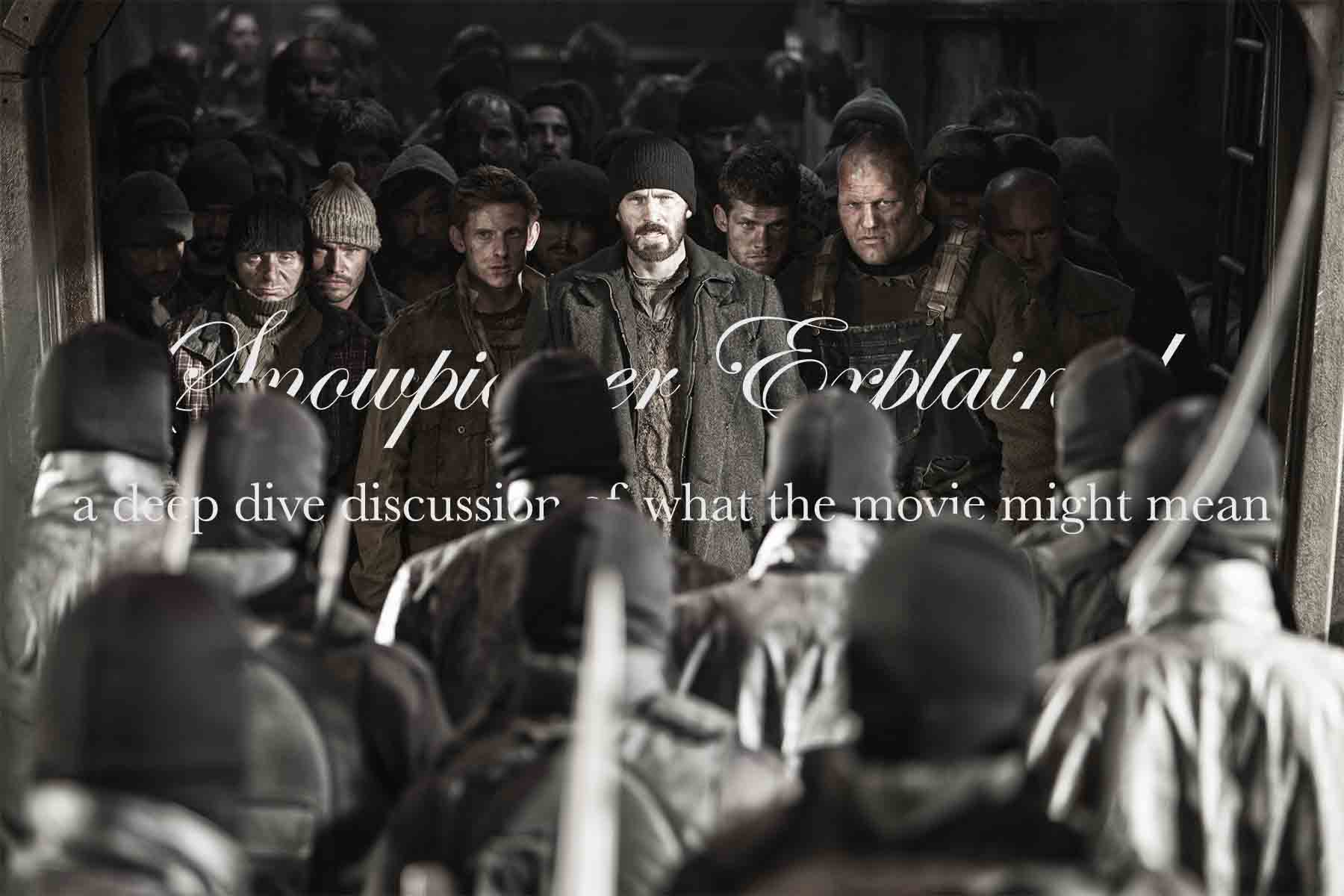Randy was kind enough to drop this movie on us collectively in the movie recommendation widget. (Red tab, bottom of your screen.) And to be honest, I watched the first 20 minutes or so immediately after Snowpiercer was released back in 2014. But I had assumed that it was polemic on economic inequality. And while that is there, it wasn’t the point of this movie at all. And so I figured I might as well explain why Snowpiercer is not the political manifesto you thought it was. K? Great.
So, first things first. If you haven’t seen Snowpiercer yet, it’s at like a 95% score on RT and is more of a myth, or a fable, discussing ideas, than it is a literal fictional account. It runs more in the vein of Mother! Or maybe The Fall. No, no, no… The Knight of Cups! It’s a movie speaking to the larger, broader brushed themes that trouble the world and society in general. And, in short, it’s amazing. Here, have a trailer if you haven’t already seen it.
The Overview of Snowpiercer
The events of Snowpiercer are simple enough to summarize in one line. Wait, I think that’s doable anyway. Let’s give it a go, shall we? The last remaining inhabitants of Earth ride a train, and the story follows an upraising from the steerage all the way to the engine room of this incredibly important train. Did I do it? And there wasn’t even a single semicolon! Seriously though, a group of the lower class members revolt, and storm their way from the back of the train, all the way to the front. And, as they go, they clash with the various expectations and glass ceilings that have kept them where they’ve been since the train startled moving.
Obviously this is a metaphor. A Greek myth as it were. (My daughter is currently reading the Iliad in her first year of high school and she wonders why it’s important. I keep telling her that the Iliad and the Greek myths come to mind regularly here on the site. And her response, no really, where else would I use it where would actually matter?!? hahah.) Much is said of the closed eco-system, and the importance of balance as the movie goes on… but whatever! This talk is 100% about the earth, and the closed eco-system necessary to keep the earth running. So as long as you are ok with instantly flipping back and forth between “Train” & “Earth” I’m sure we shall all be just fine here. Right? Great. So, if the train is the earth, and the cars are the social strata’s that make up the earth, here is an image of the varying classes and people groups that make up our world:

So, as the movie walks its way from the back of the train to the front, we see them moving out of the tail section (“be the foot”), up into the Quarantine/Prison section, onwards up through the Aquarium/Zoo/Abattoir sections, then to the Classroom and Guest Room sections. And after that, we start breaching the upper echelons of the train. We then venture into the Lounge, Swimming, and Sauna sections. And then the Club & Opium Den. And then we start to make our way through the Machinery and Engine areas of the front. But to really understand this train, its different cars, you have to take a mini-detour through a really light course in Sociology 101.
Sociology 101 and the Movie Snowpiercer
The definition of wealth is actually a truly subjective thing and is highly varied, dependent upon the economic structure one is living in. Throughout Europe, during the feudal economic system, those with the most lands had the most wealth. Then, land equaled wealth. It equaled sheep, crops, and whatever people needed to live. Land equaled cash. Within the feudal societies of the day, kings sat upon the top of the world, and it trickled all the way down to serfs who would work on the land controlled by the knights, etc. Right?
But, during the Industrial Revolution, everything changed throughout Europe. Instead of an economic system based on land, it became an economic system based on labor. The proletarians were the bottom floor upon which the entire system was dependent. Workers, sold their labor for money, and wealth was accumulated through the factories within the workers labored. And within the free market, supply drove the value down, which in turn, forced the factory owners to drop prices in return. And, as workers were let go in the drive to reduce cost, this then caused a glut in available labor, and a precipitous value of that same labor. Add into this flywheel the idea of automation and technology and the entire squeezing of the worker and the labor? Only gets worse. And that was how the bourgeoisie (the capitalists, the factory owners) became the single most powerful people in the world.
Ok? Which, inevitably now brings us to Marx. Mr. Karl had this belief that the classes were determined by the ownership of “means of economic production.” Which just meant, coal mines, factories, farm lands, et al. And within his theory of the classes, the haves and the have-nots, he said that there was this idea of the struggle between the Bourgeoisie and the Proletariat. And that this struggle came from the problem of the unequal distribution of said opportunities.
In the past we historically had kings and knights and the struggles between the plebes and the rulers. And today we have Amazon and the Amazon workers. Point taken? Labor scurries ’round these enormous warehouses, doing the work, while stock owners and company management gets rich as a result. This is not me opining. I am not casting judgment. I am simply stating facts about how the sociological system works today, and yesterday. Well, now, as we look at the class system, and the various classes we see something like this (which is the Gilbert Model):

That graph is nigh on impossible to read, but basically it says that today, the structural classes in America work something like this:
- 12% – Underclass – < $15,000 (Unemployed, part time)
- 13% – Working Poor – < $25,000 (Lowest paid manual, retail, service)
- 30% – Working Class – < $40,000 (Low-skill manual, Clerical)
- 30% – Middle Class – < 70,000 (Lower managers, Craftsmen)
- 14% – Upper-Middle – < $150,000 (Upper Manager, Business Owners)
- 1% – Capitalist Class – $2,000,000 (Investors, heirs, Execs)
What’s This Have To Do With Snowpiercer?!
Right? So what has this got to do with the movie dangit?! I thought it was about a train or something!? CHOO CHOO! Man.
No. The train is a metaphor for these charts and graphs dangit. It’s actually talking about that graph up there. The earth is a closed system. There are only so many that can be at the front of the train. And so, by definition, you need a pile of people at the back of the train in order to keep the rest of this ruse going. Some have said that Snowpiercer is communist perspective on the world… and that couldn’t be further from the truth. Marx espoused a communal belief as an efficient solution to the problem of class warfare, but the train is in a very well gradated state. “KNOW YOUR PLACE! BE THE SHOE!” And so we see Snowpiercer as the proletariat battle cry against the entitled Bourgeoisie. Marx advocated for the uprising of the working class in order to overturn the social norms of the day, and to redistribute the factories, the resources, to everyone equally. And while Snowpiercer is about the uprising among classes, it isn’t sociology textbook for a class struggle and the political framework for surviving such an uprising.
Like, AT ALL.
When perusing Reddit, and other answer boards discussing this movie, most people concentrate on the ending, and the doomed situation that the few survivors find themselves in. Polar Bears! But no. They are all missing the point of the larger story that is being told here.
The “Happy” Ending of Snowpiercer Explained
A “happy” ending from a viewer standpoint doesn’t need to be happy, to be a happy ending. Basically what constitutes a happy ending is one where the hero has grown, learned, and had an epiphany. He/she was once pompous and indifferent, and now they are invested and engaged. Well, in Snowpiercer, Curtis, the disinterested leader of the uprising, has taken ownership of his role amongst the back-enders. He has lead them successfully forward. But in his admission to Giliam, he doesn’t deserve to be the leader in that he still had both his arms. He hadn’t sacrificed like others had. He was, in a word… selfish.
But then Curtis learns that everything on the train has its purpose and has its meaning. The people are locked into their classes, locked into their areas. The population needs to be carefully maintained. (I’ve attempted a closed eco-system aquarium once. Yeah, it didn’t go well at all. It is a truly difficult thing to achieve.) But here on the train, the front-enders have figured out that if they allow (entice even) the back-enders into rebellion every once in a while it did several things for them. It thinned the numbers on the train, all the while, it also gave the back-enders a false hope that what they were doing was making a difference. But they had been inceptioned through the notes they were getting from the front.
Now, when Curtis finds the child that had been taken earlier in the movie, he learns that the child was stolen to become a part for the train. A literal cog in the machine. (About as obvious a reference to capitalistic ideas towards human labor imaginable.) And so when Curtis throws his arm into the working parts of the train, it is a literal reference back to his inability to sacrifice for others. And not only was he able to do that for the people of the train, but he also gave his life as well. So ultimately, Curtis not only overcame the expectations of the Bourgeoisie by pushing further than ever expected with the “Curtis Revolt,” but he also overthrew the entire system by giving his life to its demise. Yona and Timmy have been saved by the sacrifice of Curtis and Namgoong. Better yet? Namgoong’s apparent drug addiction turns out to be their salvation, as he uses the fuel as a huge bomb to blow open the door to the outside.

But the Polar Bears Man?!?
Everyone is dead. The two kids survived. The environment is inhospitable. And there are polar bears straight ahead. Obviously this is a horrible, horrible ending. This is the end of the human race as we know it.
No. Calm down. Gah.
The kid’s first steps are like their walking on the moon. Its a historic achievement in the history of man. And the polar bear is a symbol of life outside the train. Hope beyond the confines of the stratified life inside the train. Yona and Timmy are the new Adam and the new Eve. And the fact that there is ANY life beyond the train means that they have hope to start anew for the world. Water, food, shelter, temperatures, etc, everything is there for them to make it and survive. And most likely? There are other survivors as well, maybe not many, but some. But this is about as light hearted of an ending you could possibly have ever gotten from a movie this pessimistic about humanity and its inhumanities towards itself.
Personal Thoughts About Snowpiercer
I really enjoyed this movie and its clever twists, its clever turns. The most enjoyable of it being that Curtis’ uprising was incited by the front. That the insurrection was without originality from the back-enders. Which implies that all such class risings are the ideas of the Bourgeoisie. And yet he still overthrew the insurrection expectations. That he died selflessly for the others, in an attempt to free them from the chains of the system. Oh, and by the way, the sets were amazing, the acting was amazing, and everything was gorgeous throughout. But mainly I completely got off on the ideas of this thing. That maybe we can overcome the internal rules of our social classes and that we can become selfless towards a greater cause than ourselves.
Edited by, CY


